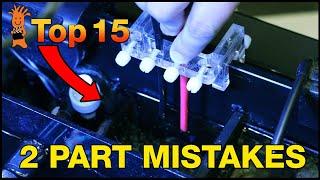Top 3 Reasons To Use A Nutrient Dosing System
Description
Nutrient dosing or delivery systems are associated with precision irrigation, automation, and convenience, but it's also known for high upfront costs. Sticker shock can frighten growers into putting off buying the equipment, even though most growers admit that the upfront investment eventually pays off. Reduced resource waste, lower labor requirements, and saving time are just a few of the things that convince growers to invest in their cultivation facilities' future. Let's examine what nutrient or fertilizer delivery systems do and why using one may be more beneficial than you think.
What is a nutrient dosing system?
Commonly referred to as fertigation, a nutrient-dosing system injects water-soluble fertilizers and other solutions into an irrigation line. In addition to providing plants the nutrients they need, high-quality systems can also measure EC and pH.
How it works.
Using a sophisticated series of sensors, these systems monitor EC and pH levels in the water. Exceptional systems can be reached using a mobile app to generate parameters, set rules, and build room-specific recipes in real-time. In response to the rules you create, batch tanks are filled by pumps or feed plants for a calculated duration. Advanced systems are connected via software for constant feedback to improve yields consistently.
Top 3 Reasons To Invest in Fertigation
Save Time - The primary benefit of fertigation or nutrient dosing systems is that it allows farmers to deliver a precise amount of nutrients based on the crop type and growing medium, automatically, saving valuable time. Create recipes for room-specific strains and various plant growth stages.
Save Resources - Chemicals involved in fertilization can be harmful to the environment. Fertilizers leaching into outdoor water sources is a serious concern. Excess fertilizer leaving the growing environment before plants can utilize it is the most common occurrence. Nutrient delivery systems prevent the fertilized irrigation water from the outdoor water supplies using chemical spill trays, backflow prevention devices, and by physically separating it from the surrounding ground. Dialing in exact doses ensures that the system provides as much fertilizer as the plants can use, significantly reducing the risk of excess chemicals leaching out of the system or wasting valuable resources.
Reduced Labor Requirements - While automated nutrient delivery systems require regular maintenance, the effort required to operate them is insignificant compared to the labor costs saved on manually performing the task. Having automated feeding will free up time to focus on other essential tasks and dramatically decrease the staff required to perform the tasks manually.
Final Thoughts
As improvements in indoor agriculture advance, the number of growers applying these profit-producing systems will only continue to increase.
Learn More at Growlink.com





















Comments